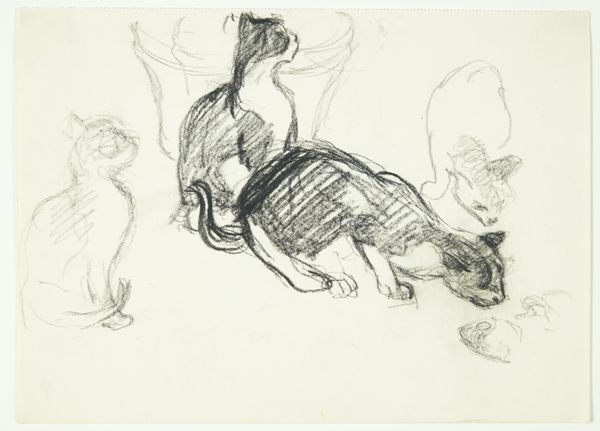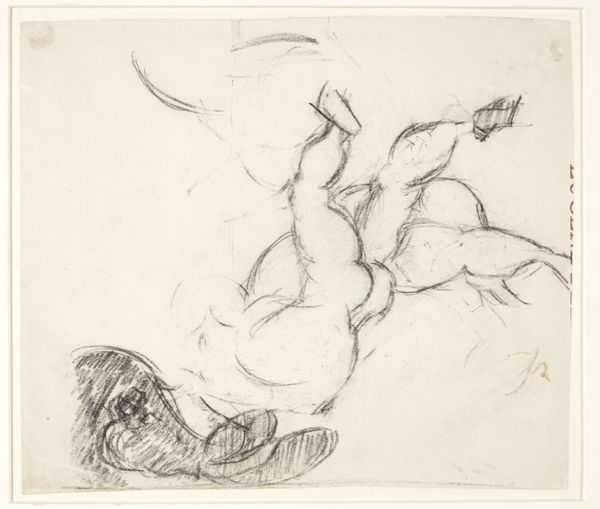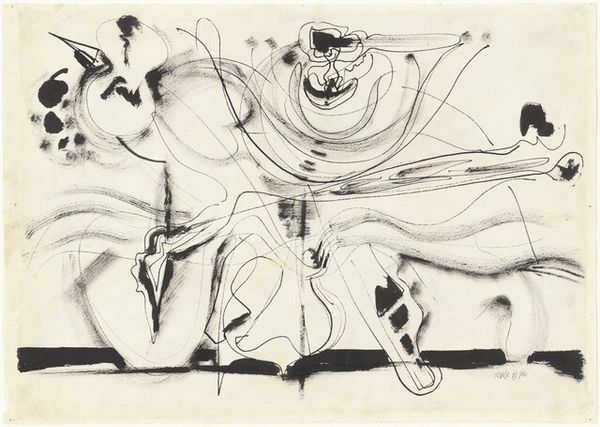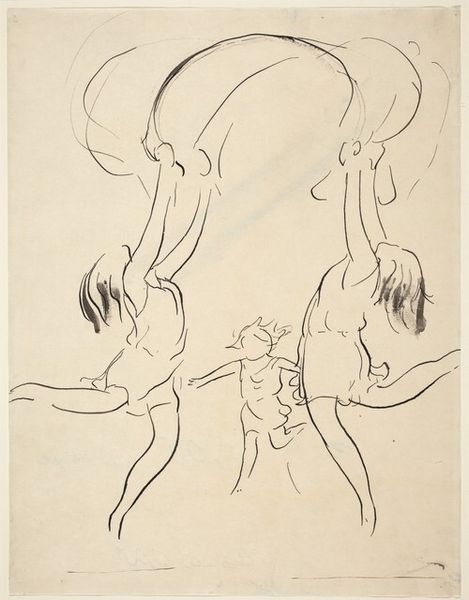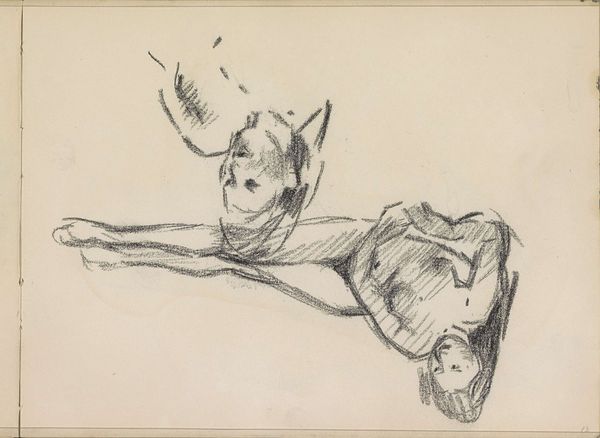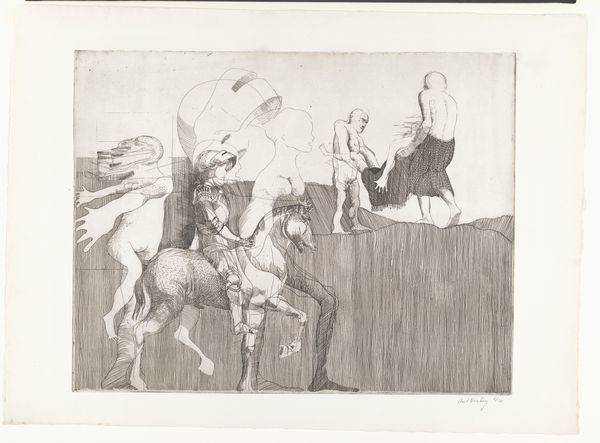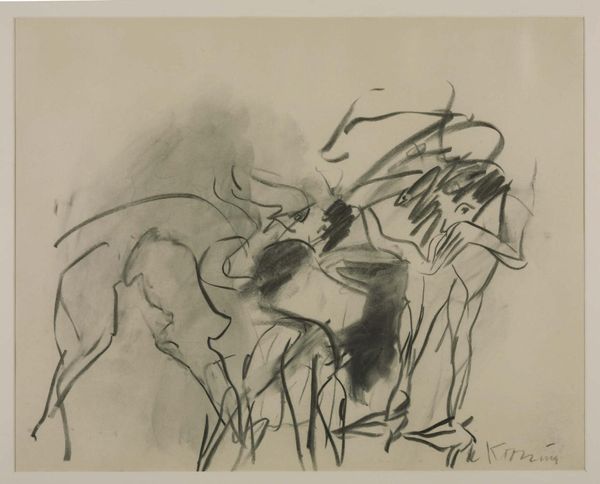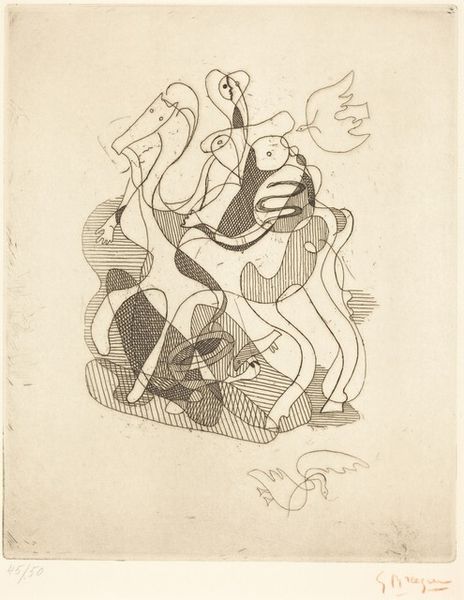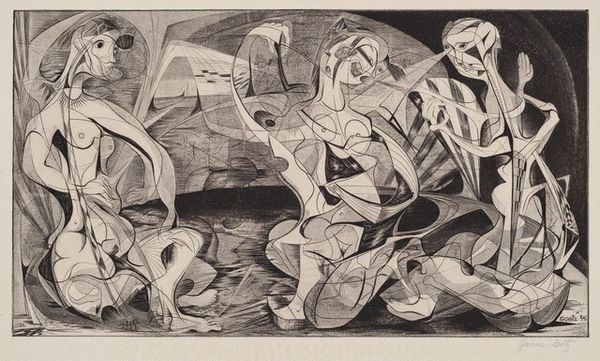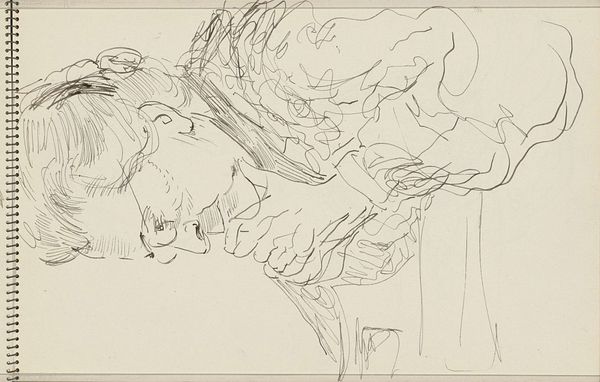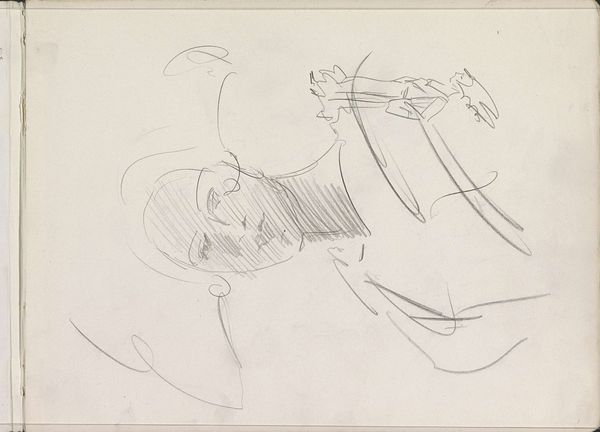
print, etching, engraving
#
narrative-art
# print
#
etching
#
figuration
#
geometric
#
engraving
#
modernism
Dimensions: plate: 295 x 398 mm sheet: 449 x 555 mm
Copyright: National Gallery of Art: CC0 1.0
Curator: Gabor Peterdi's 1939 engraving and etching, “The Arena,” presents a dense composition of human and animal figures caught in chaotic movement. What strikes you initially about this print? Editor: The frenetic energy is almost overwhelming. It's a jumble of limbs and snarls, conveying a sense of brutality. The monochromatic palette amplifies this tension, heightening the drama through contrasting lights and darks. Curator: Precisely. Peterdi was deeply involved in the artistic and political milieu of the time, grappling with the rise of fascism and the impending war. The etching process itself—the labor-intensive scratching and biting of the plate—mirrors the violence depicted, turning the artist’s hand into a site of production that echoes social strife. The finished product then enters a cycle of consumption, further implicating viewers. Editor: I agree that the etching medium is significant. The sharp lines and intricate details contribute to the work's intensity. And that tonal range… the artist achieves great depth through a skilled manipulation of light, using hatching and cross-hatching techniques. The geometric structures underlying the composition help create balance amid the chaos. Curator: Yes, and think about the consumption of images like these in mass media during the period. This wasn't just aesthetic contemplation; it was a visual processing of the collective trauma building up to World War II. Peterdi, through his work, was not simply depicting violence but commenting on its permeation into everyday life and culture, reflecting both his anxiety about impending war and the economic factors that fuel the production of war-time propaganda. Editor: That's a compelling connection. Seen from a purely formalist view, the dynamic arrangement—how the bodies twist and contort—certainly keeps the eye moving restlessly around the composition. There is no single focal point, creating visual unrest, almost an agony of figures clawing their way into awareness. Curator: Ultimately, Peterdi compels us to acknowledge our place within such arenas, both as spectators and, perhaps, participants. It forces a self-assessment of our position within larger systemic forces. Editor: Agreed. It certainly provokes a profound sense of unease. A great convergence of process and raw emotion.
Comments
No comments
Be the first to comment and join the conversation on the ultimate creative platform.
